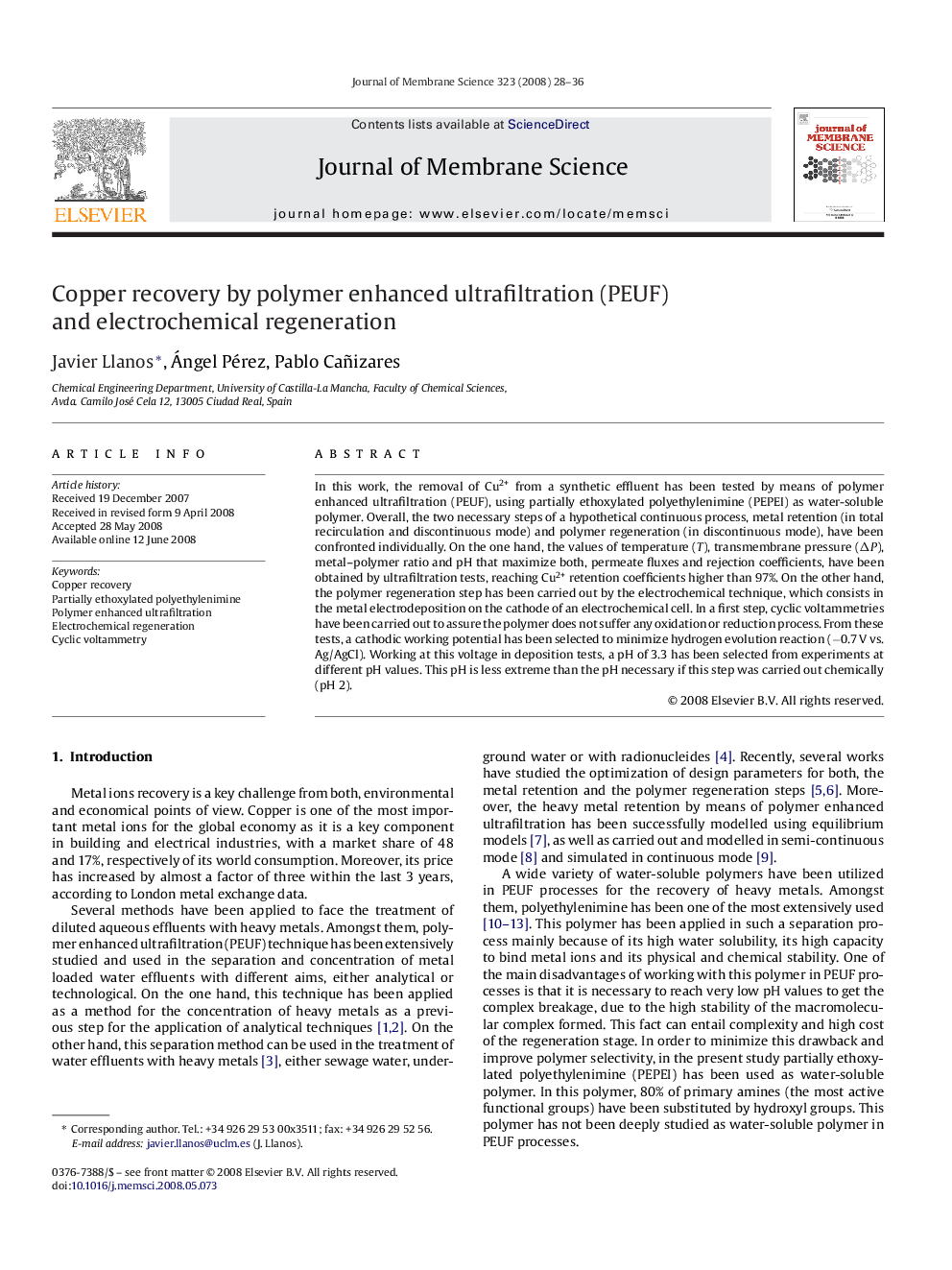| Article ID | Journal | Published Year | Pages | File Type |
|---|---|---|---|---|
| 637765 | Journal of Membrane Science | 2008 | 9 Pages |
In this work, the removal of Cu2+ from a synthetic effluent has been tested by means of polymer enhanced ultrafiltration (PEUF), using partially ethoxylated polyethylenimine (PEPEI) as water-soluble polymer. Overall, the two necessary steps of a hypothetical continuous process, metal retention (in total recirculation and discontinuous mode) and polymer regeneration (in discontinuous mode), have been confronted individually. On the one hand, the values of temperature (T), transmembrane pressure (ΔP), metal–polymer ratio and pH that maximize both, permeate fluxes and rejection coefficients, have been obtained by ultrafiltration tests, reaching Cu2+ retention coefficients higher than 97%. On the other hand, the polymer regeneration step has been carried out by the electrochemical technique, which consists in the metal electrodeposition on the cathode of an electrochemical cell. In a first step, cyclic voltammetries have been carried out to assure the polymer does not suffer any oxidation or reduction process. From these tests, a cathodic working potential has been selected to minimize hydrogen evolution reaction (−0.7 V vs. Ag/AgCl). Working at this voltage in deposition tests, a pH of 3.3 has been selected from experiments at different pH values. This pH is less extreme than the pH necessary if this step was carried out chemically (pH 2).
